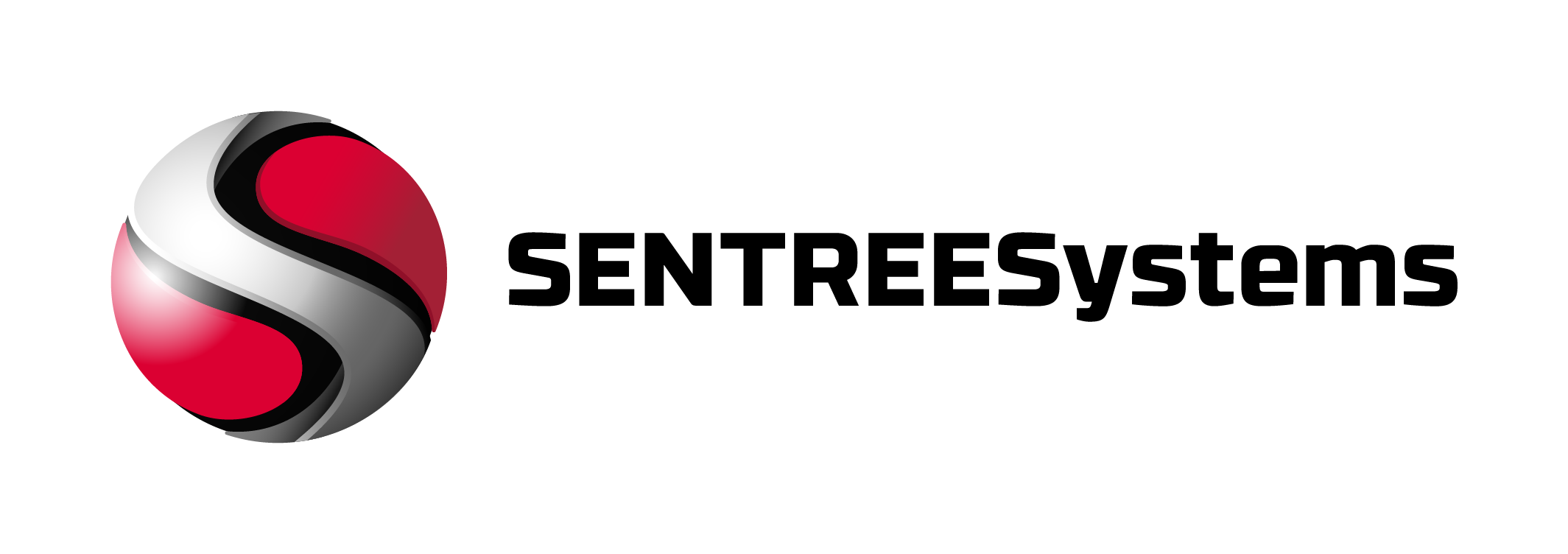Introduction
In the ever-evolving digital landscape, keeping your business’s data safe from cyber threats is a pressing concern. The fact is traditional security measures like antivirus software and firewalls are no longer sufficient to thwart sophisticated attacks.
This article unpacks why turning to a third-party SOC could be your best defense strategy, offering round-the-clock surveillance by seasoned experts at an affordable cost.
Intrigued? Continue reading to discover how managed SOC can bolster your cybersecurity efforts.
Key Takeaways
- A third-party SOC provides round-the-clock surveillance by experienced experts at an affordable cost to keep your business’s data safe from cyber threats beyond traditional security measures like antivirus software and firewalls.
- Managed SOC offers 24/7 network monitoring, proactive threat detection, access to security expertise, efficient use of time and budget, and better handling of real threat alerts, making it crucial for businesses in the ever-evolving digital landscape.
- With a managed SOC as a service, organizations gain frontline cyberthreat intelligence, access to advanced security technologies such as SIEM systems and IAM solutions, reduced turnover in the SOC team, efficient use of IT bandwidth, decreased costs, and compliance advisory.
Understanding Security Operation Center (SOC)
A SOC acts as the hub for your cybersecurity efforts. The main function of a SOC lies in its consistent tracking, assessment, and defense against cyber threats to ensure your IT infrastructure’s security.
Protecting sensitive data from breaches forms the core objective of a managed SOC, with dedicated teams utilizing tools like SIEM systems, Identity and Access Management solutions, alongside antivirus software and firewalls to keep cybercriminal activities at bay.
However, it’s essential to understand that a successful Security Operation Center amounts to more than just setting up an array of high-tech security systems. Its foundation relies on assembling an adept team of experts playing various roles – from security analysts who assess potential vulnerabilities to forensic investigators conducting thorough examinations post any detected breach.
Additionally, incident responders handle immediate threat mitigation while communication coordinators maintain seamless flow of critical information within the team. This proactive approach enables continuous monitoring 24/7/365 so that no suspicious activity goes unnoticed or unreported.
Top 5 Reasons Your Business Needs a Managed SOC
There are five compelling reasons why your business needs a managed SOC: 24/7/365 network monitoring, proactive threat detection, access to security expertise, efficient use of time and budget, and better handling of real threat alerts.

24/7/365 Network Monitoring
In today’s digital age, round-the-clock network monitoring is crucial to safeguard your business from cyber threats. A Managed Security Operation Center (SOC) provides real-time, 24/7/365 network monitoring essential in the early detection and mitigation of cyberattacks that could jeopardize your business integrity and sensitive data.
With relentless scrutiny on every byte flowing through your IT infrastructure, a managed SOC creates an impenetrable security perimeter around your digital landscape. This rigorous observation allows for faster response to threats even before they escalate into system-compromising issues.
Furthermore, this continuous vigilance reduces downtime resulting from intrusions or breaches, ensuring seamless operations while freeing up valuable resources within your business operations.
Proactive Threat Detection
In the realm of network security, proactive threat detection stands as a cornerstone feature of a Managed Security Operation Center (SOC). This capability allows enterprises to stay one step ahead in the digital landscape where cybercriminals are continuously innovating new tactics.
Leveraging advanced technologies and cyber threat intelligence databases, managed SOC service providers identify potential threats before they can inflict damage on your IT infrastructure. These teams of cybersecurity experts work tirelessly around the clock, scanning multiple sources for signs of unusual or suspicious activity.
The real-time nature of this monitoring ensures that any abnormalities are detected early and flagged immediately for analysis. This offers your business an enhanced level of protection against data breaches by preventing cyber attacks instead of merely responding post-incident.
A robust proactive threat detection system ultimately provides peace-of-mind that your sensitive data is shielded from intrusions 24/7 by experienced professionals.
Access to Security Expertise
One of the top reasons why your business needs a managed SOC is gaining access to security expertise. In today’s digital age, cybersecurity requires specialized knowledge and skills that may not be readily available within your existing IT department.
By partnering with a managed SOC service provider like Nomios, you can tap into a team of dedicated security experts who have extensive experience in identifying and mitigating cyber threats.
These professionals stay up-to-date with the latest trends and best practices in cybersecurity, allowing them to provide your organization with invaluable insights and recommendations for strengthening your security posture.

Efficient use of Time and Budget
Managed SOC solutions offer enterprises an efficient use of time and budget, allowing them to focus on their core business operations while leaving the cybersecurity responsibilities to external experts.
With a subscription-based model, organizations can save on costs associated with building and maintaining an in-house security team, such as hiring, training, and ongoing management. Managed SOC providers also handle the deployment and maintenance of advanced security technologies like Security Information and Event Management (SIEM) systems and Identity and Access Management (IAM) solutions.
This allows businesses to allocate their resources effectively while still benefiting from top-of-the-line cyber defenses. By leveraging managed SOC services, companies can optimize their time and budget allocations towards achieving overall business objectives without compromising on security.
Better handling of Real Threat Alerts
With the increasing frequency and sophistication of cyber threats, it’s crucial for businesses to have a reliable system in place to handle real threat alerts effectively. This is where a managed Security Operation Center (SOC) comes into play.
Unlike traditional cyber defenses that simply provide basic protection, a managed SOC offers 24/7/365 network monitoring by a team of security experts who are trained to detect and respond to potential threats promptly.
By using advanced techniques such as behavioral analysis and threat hunting, managed SOC teams can differentiate between regular activities and actual threat behavior, ensuring that real threats are identified accurately and dealt with efficiently.
The Value of a SOC as a Service
A SOC as a Service provides organizations with frontline cyberthreat intelligence, access to advanced security technologies, reduced turnover in the SOC team, efficient use of IT bandwidth, decreased costs, and compliance advisory.
Frontline Cyberthreat Intelligence
With the ever-evolving digital landscape and cybercriminal activities becoming more sophisticated, it is crucial for businesses to stay ahead of potential threats. This is where a managed Security Operation Center (SOC) comes into play, providing frontline cyberthreat intelligence.
Unlike traditional cybersecurity defenses that rely on reactive measures like firewalls and antivirus software, a managed SOC takes a proactive approach by monitoring cloud environments, devices, logs, and networks 24/7/365.
By leveraging advanced security technologies such as behavioral threat analytics and AI/machine learning algorithms, the SOC team can detect and respond to potential threats before they cause harm.
Access to Advanced Security Technologies
Managed SOC service providers offer businesses access to advanced security technologies that are otherwise expensive and complex to implement in-house. These technologies include sophisticated security software, such as Security Information and Event Management (SIEM) systems, Identity and Access Management (IAM) solutions, behavioral threat analytics powered by artificial intelligence (AI), machine learning algorithms for threat detection, and cloud access security brokers.
By leveraging these cutting-edge tools, businesses can significantly enhance their cybersecurity infrastructure and stay one step ahead of cybercriminal activities. With the help of a managed SOC, organizations gain the advantage of continuous monitoring using intrusion detection systems (IDS), intrusion prevention systems (IPS), penetration testing tools, vulnerability scanners, and more.
This arsenal of advanced security technologies allows businesses to proactively detect threats, respond quickly to incidents through forensic analysis, protect sensitive data from breaches or unauthorized access attempts effectively.
Reduced SOC Turnover
One of the key benefits of a managed Security Operation Center (SOC) is reduced turnover in your security team. Employee burnout and high turnover rates can significantly impact the effectiveness of your cybersecurity efforts.
By partnering with a third-party SOC service provider, you can alleviate this burden from your internal IT department and ensure that you have a dedicated team of experienced professionals who are focused solely on protecting your organization from cyber threats.
Managed SOC providers have the necessary resources to attract top talent and retain skilled security experts, which can be challenging for individual companies. With reduced turnover, you benefit from consistent expertise and knowledge in threat detection, incident response, forensic analysis, vulnerability management, and more.
This stability allows for better collaboration between analysts and improves overall efficiency in handling real-time threats.
Additionally, by outsourcing your SOC needs to a reputable provider, you eliminate concerns about managing staff fatigue or maintaining up-to-date knowledge of evolving cybersecurity technologies.
Outsourced managed SOC services offer 24/7 monitoring capabilities without exhausting your internal team members or risking gaps in coverage during shift changes.
Reclaiming of IT Bandwidth
A managed Security Operation Center (SOC) can help your business reclaim valuable IT bandwidth that is currently being allocated to handling security incidents and monitoring cyber threats.
By outsourcing these tasks to a third-party SOC service provider, your in-house IT team can focus their efforts on other critical areas of the business. With continuous 24/7 network monitoring and proactive threat detection provided by the SOC, your IT staff will no longer have to spend time investigating every security alert or managing cumbersome security systems.
This allows them to utilize their skills and expertise more efficiently, improving overall productivity and reducing the risk of employee burnout. Additionally, by offloading cybersecurity responsibilities to a dedicated team of experts, you can ensure that all aspects of your digital infrastructure are protected without stretching your current capabilities or resources thin.

Decreased SOC Costs
Managed SOC service providers offer a cost-effective solution for businesses looking to enhance their cybersecurity capabilities without breaking the bank. By outsourcing your security operation center, you can significantly reduce costs associated with maintaining an in-house security team and the necessary infrastructure.
With a managed SOC, you no longer need to invest in expensive security software and hardware or worry about recruiting and training specialized cybersecurity experts. Instead, you pay a fixed monthly or yearly fee for access to a team of experienced professionals who provide 24/7/365 network monitoring and proactive threat detection at a fraction of the cost.
This not only saves your organization money but also allows you to allocate resources more efficiently towards other critical areas of your business.
Compliance Advisory
To ensure that your business remains compliant with industry regulations and standards, a managed Security Operation Center (SOC) can provide valuable compliance advisory services. These services help you navigate the complex world of cybersecurity regulations and implement the necessary measures to protect sensitive data and prevent breaches.
By partnering with a SOC service provider, you gain access to security experts who will assess your current IT infrastructure, identify potential vulnerabilities, and recommend best practices for maintaining compliance.
This proactive approach ensures that your organization stays ahead of changing compliance requirements and reduces the risk of costly fines or reputational damage due to non-compliance. With their up-to-date knowledge on industry regulations such as Payment Card Industry Data Security Standard (PCI DSS) or Health Insurance Portability and Accountability Act (HIPAA), a managed SOC can guide you in implementing effective security controls while meeting regulatory obligations.
How to Choose the Right SOC Service Provider
To choose the right SOC service provider, assess your objectives and capabilities, design the SOC, assemble a skilled team, equip with advanced technologies, and measure performance for optimal cybersecurity.
Find out how in our blog.
Understanding your objectives and capabilities
To effectively choose the right Security Operation Center (SOC) service provider for your business, it is crucial to have a clear understanding of your objectives and capabilities. This will ensure that you select a SOC that aligns with your specific needs and can deliver the level of protection your organization requires. Consider the following factors when evaluating your objectives and capabilities:
- Business Objectives: Determine what you want to achieve with your cybersecurity strategy. Identify the specific goals you have in mind, whether it’s protecting sensitive data, preventing cyber-attacks, ensuring compliance with regulations, or all of the above.
- Current Capabilities: Assess your existing IT infrastructure and security measures. Understand the strengths and weaknesses of your current setup, including any gaps in resources or expertise that need to be addressed.
- Functional Requirements: Define the specific functionalities and features you expect from a managed SOC service provider. This may include 24/7 threat monitoring, incident response capabilities, access to advanced security technologies, compliance advisory services, and more.
- SOC Operations: Consider how you want the SOC to integrate into your organization’s operations. Determine if you prefer an on-premises SOC or a remote SOC as a service (SOCaaS) model. Evaluate whether you want full control over the SOC team or prefer to outsource all aspects of cybersecurity management.
- Technical Architecture: Assess your current information architecture and determine how the SOC will fit into it seamlessly. Consider factors such as integration with existing security systems like SIEM platforms, IAM solutions, intrusion detection systems (IDS), etc.
Designing the SOC
Designing the SOC is a crucial step in establishing an effective security operation center for your business. Here are key considerations to keep in mind:
- Determine your business objectives: Clearly define your security goals and objectives. Identify the specific threats and vulnerabilities relevant to your industry and organization.
- Assess your current capabilities: Evaluate your current IT infrastructure, personnel, and resources available for the SOC. Understand the gaps and limitations that need to be addressed.
- Define your functional requirements: Identify the specific functions and capabilities you require from your SOC. This may include threat detection, incident response, vulnerability management, compliance monitoring, or other specific needs.
- Plan SOC operations: Determine how the SOC will integrate with existing IT processes and teams within your organization. Define roles and responsibilities of SOC team members, including forensic investigators, incident responders, security analysts, etc.
- Establish technical architecture: Design the technical infrastructure required for efficient SOC operations. This may involve selecting and implementing security software and hardware solutions such as SIEM systems, IAM solutions, intrusion detection systems (IDS), penetration testing tools, etc.
- Consider third-party service providers: Evaluate whether to build an in-house SOC or partner with a managed security services provider (MSSP) for a custom-managed SOC solution or Security Operation Center as a Service (SOCaaS). Consider factors such as cost-effectiveness, expertise availability, scalability, and flexibility.
- Implement metrics for performance measurement: Develop metrics to measure the effectiveness of your SOC in detecting threats, responding to incidents, minimizing response time (Time-to-Value), reducing false positives/false negatives ratio. Continuously assess these metrics to improve the efficiency of your SOC operations.
Assembling the SOC team
- Start by identifying the key roles required for an effective SOC team: SOC manager, security analyst, SIEM engineer, forensic investigator, incident responder, and compliance auditor.
- Seek out experienced professionals who possess the necessary skills and knowledge in cybersecurity and threat detection.
- Ensure that the SOC manager has a strong background in security operation and can effectively lead the team.
- Look for security analysts who are skilled in real – time risk management and security intelligence to monitor and analyze threats.
- Hire a SIEM engineer who will be responsible for SIEM administration, incident response, and maintaining vendor relationships.
- Consider adding a forensic investigator to the team who can analyze incident data, evidence, and behavior analytics to determine the nature of cyber threats.
- Include an incident responder who is trained in conducting initial investigations and threat assessments using established incident response plans.
- Don’t forget about compliance auditing – hire someone who ensures that all SOC procedures remain compliant with regulations and industry standards.
- Consider a co – managed SOC model where internal employees are supplemented with independent contractors to reduce personnel costs while ensuring specialized expertise.
- Prioritize teamwork and collaboration skills when evaluating potential team members as SOC operations require seamless coordination between different roles.
- Look for individuals with certifications such as Certified Information Systems Security Professional (CISSP) or Certified Ethical Hacker (CEH) to demonstrate their expertise in the field.
- Conduct thorough interviews to assess candidates’ technical skills, problem – solving abilities under pressure, and their ability to adapt to evolving cyber threats.
- Create a diverse team with a mix of expertises and backgrounds to bring different perspectives when addressing security challenges.
- Establish clear reporting lines within the team hierarchy so that each member understands their role in contributing towards overall security objectives.
- Training is integral – ensure ongoing professional development opportunities are provided for all team members to stay up-to-date with rapidly changing cybersecurity landscape.
Equipping the SOC
To effectively equip your Security Operation Center (SOC), consider the following:
- Use a managed SOC service provider: A managed SOC service provider will handle the management of your Security Information and Event Management (SIEM) solution, ensuring that events are monitored, the system is patched and updated, and comprehensive reports and log events are provided.
- Improve overall security: A managed SOC service provider will enhance your overall security posture by protecting against cyber threats and helping you manage compliance requirements.
- Reduce time to detect and respond: With a managed SOC service provider, you can significantly reduce the time it takes to detect and respond to security threats. Their proactive threat detection capabilities ensure round-the-clock monitoring by experienced security experts.
- Actionable threat alerts: Managed SOC service providers filter out non-critical alerts, sending only actionable threat alerts that require immediate action. This saves valuable time and resources for your IT team.
- Free up internal resources: Lack of talented resources is a common challenge for organizations managing their own SIEM solution. By partnering with a managed SOC service provider, you can free up your in-house teams to focus on other important security projects.
- Cost-effectiveness: Managed SOC services offer an affordable and predictable monthly fee compared to the high cost of implementing and maintaining an in-house SIEM solution. They eliminate the need to hire new security personnel or invest in expensive training programs.
- Expertise and resources: Managed SOC service providers have the expertise and resources to quickly establish and maintain effective security operation within your organization. They bring in-depth knowledge of cybersecurity best practices, advanced technologies, and industry regulations.
Measuring SOC performance
To ensure the effectiveness of your Managed Security Operation Center (SOC) and continuously improve your cybersecurity posture, it is crucial to measure SOC performance. Here are some key metrics and methods to consider:
- Response Time: Measure the time it takes for your SOC team to detect and respond to security incidents. This metric helps evaluate their efficiency in mitigating threats promptly.
- Mean Time to Detect (MTTD): Calculate the average time it takes for your SOC team to identify security incidents. A low MTTD indicates quicker threat detection and reduces potential damage.
- Mean Time to Respond (MTTR): Determine the average time taken by your SOC team to respond and resolve security incidents. A shorter MTTR demonstrates effective incident management and faster containment.
- False Positives: Keep track of false positives generated by your SOC systems. High false positive rates can increase response times, strain resources, and lead to alert fatigue.
- Incident Resolution Rate: Monitor the rate at which incidents are successfully resolved by your SOC team. A higher resolution rate indicates effective investigation techniques, accurate decision-making, and successful remediation efforts.
- Threat Hunting Effectiveness: Assess how effectively your SOC team proactively hunts for potential threats and vulnerabilities within your network environment. This metric highlights their ability to identify risks before they become full-blown cybersecurity incidents.
- Training and Skill Development: Evaluate the progress of your security analysts through certifications, training programs attended, or completed courses related to emerging threats and technologies in the cybersecurity field.
- Compliance Adherence: Monitor how well your SOC team adheres to compliance regulations such as Payment Card Industry Data Security Standard (PCI DSS), Health Insurance Portability and Accountability Act (HIPAA), etc., ensuring that they meet both internal and external security requirements.
- Client Satisfaction: Obtain feedback from internal stakeholders or clients regarding their satisfaction with the services provided by the SOC team, including incident handling, responsiveness, and overall effectiveness in protecting the organization’s assets.
- Continuous Improvement Initiatives: Track the implementation of recommendations and lessons learned from post-incident reviews or security assessments, ensuring that your SOC team actively incorporates improvements into their processes and workflows.
Conclusion
In today’s digital age, the importance of protecting valuable data and defending against cyber threats cannot be overstated. That’s why your business needs a third-party Security Operation Center (SOC) to provide 24/7 monitoring, proactive threat detection, access to security expertise, efficient use of time and budget, and better handling of real threat alerts.
With a managed SOC as a service, you can stay ahead of cybercriminal activities and ensure the safety and integrity of your IT infrastructure. Don’t wait until it’s too late – invest in the right SOC service provider to safeguard your business from potential breaches and data loss.
FAQs
1. What is a Third-Party Security Operation Center (SOC)?
A Third-Party SOC is an external entity that provides cybersecurity services and monitors an organization’s network for potential threats, breaches, and vulnerabilities. They have specialized expertise and advanced tools to detect, analyze, and respond to security incidents.
2. Why does my business need a Third-Party SOC?
Having a dedicated Third-Party SOC can provide several benefits for your business, including round-the-clock monitoring of your networks and systems, timely detection of cyber threats, rapid response to security incidents, access to advanced threat intelligence and technology, cost-effectiveness compared to building an in-house SOC, and compliance with regulatory requirements.
3. How can a Third-Party SOC enhance my organization’s cybersecurity posture?
By outsourcing your cybersecurity needs to a reputable Third-Party SOC provider, you gain access to their expertise in identifying vulnerabilities or weaknesses in your infrastructure before they are exploited by attackers. Their proactive approach allows them to continuously monitor for emerging threats while providing recommendations on improving security protocols and mitigating risks within your organization.
4. Will partnering with a Third-Party SOC compromise the confidentiality of our data?
No credible Third-Party SOC will compromise the confidentiality of your data. Reputable providers adhere strictly to industry standards for privacy protection while implementing robust security measures themselves. It’s crucial to thoroughly vet any potential provider regarding their track record, certifications they hold (such as ISO 27001), encryption practices employed when handling sensitive information about clients’ networks or assets being monitored/managed by them during ongoing operations prior enlisting their services .




